What berries are similar to raspberries?
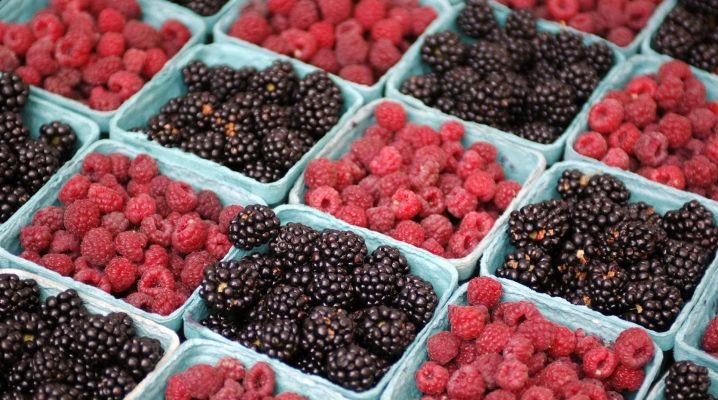
Raspberry is everyone's favorite. Both delicious and beautiful, and most importantly, very healthy. In this article, you will get acquainted with berries similar to raspberries, find out what are their similarities and differences.
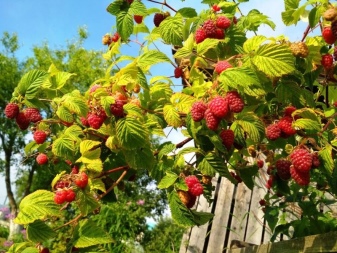

Description of mulberry
Let's start our acquaintance with raspberry-like cultures with mulberry.
What does it look like?
Mulberry, or mulberry, only vaguely resembles raspberries. The berries have a more elongated, oblong shape. Fruit length is 5-5.5 cm. They ripen in July-August. In the language of botanists, a mulberry is a nut covered with drupes with tender juicy pulp with a unique taste and aftertaste that is unlike anything else.
The plant itself is a tall, spreading tree. In the wild, it reaches a height of 15 m or more. Mulberry grows in the North Caucasus, in the Crimea, the Volga region, on the territory of Moldova.
Through the efforts of breeders, standard crop varieties have been bred, which grow well not only in warm regions, but also in central Russia, in Belarus.
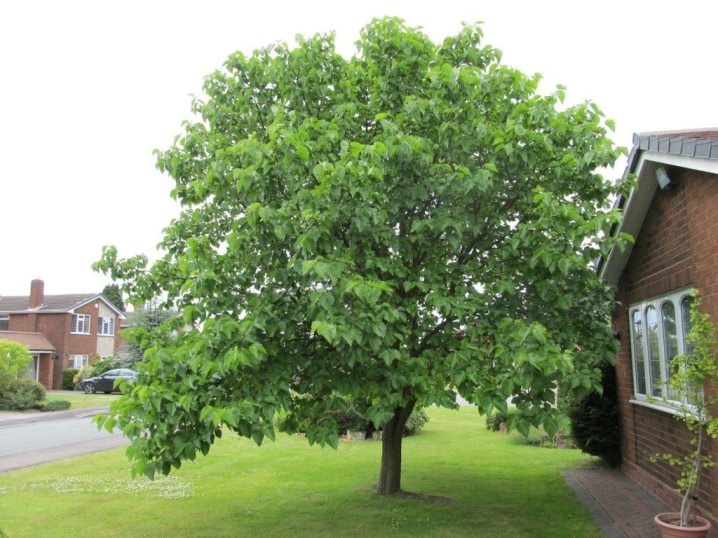
Black and white
Mulberries are white and black. Dark, blue with a blue tint or deep purple fruits have a sweeter, slightly sugary taste due to the higher sugar content.
White mulberry trees are not only snow-white, but also pale pink, yellowish, cream. The taste of white berries is specific. They are just as juicy, but more sour and less cloying. Due to its low sugar content and high content of vitamins and minerals, mulberries are used in dietary nutrition and treatment. It is an excellent diuretic and choleretic agent and a natural source of potassium and phosphorus for people with cardiovascular disease.
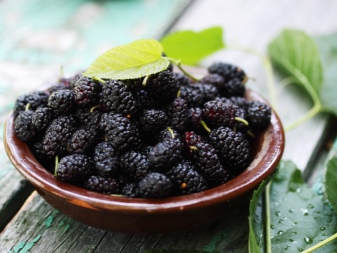
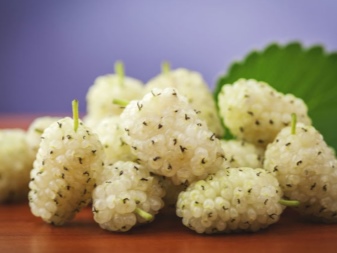
Jam, compotes, jams and mousses are made from mulberries. They make exquisite wine.
Comparison with cloudberry
Cloudberries are called the royal berry, the swamp guard and the gold of the North. You can meet it in wet young birch and spruce forests, swampy lowlands, moss tundra. It grows in the Far East, in Karelia, on the Kola Peninsula. There are in the Leningrad region, Belarus, Sweden and Norway.

What does it look like?
Cloudberry is a herbaceous low shrub. Plant height is about 20-30 cm. It blooms in June, single white flowers, and begins to bear fruit at the end of July. Unripe red fruits are 1.5-2 cm in diameter, very similar to common raspberries. When the cloudberry ripens, it turns from bright red to amber, resembling the yellow varieties of raspberries "Porana dew" and "Golden domes". Ripe transparent berries of light orange color acquire a delicate sour-sweet, slightly astringent taste with spicy notes and a pronounced honey aroma.
By its properties, cloudberries are as delicate as raspberries. Soft fruits require delicate collection and handling, they cannot be wrinkled and shaken, otherwise they will quickly wrinkle and let the juice out.

How is it useful?
Cloudberries are not only beautiful, like raspberries, but no less useful. It contains fatty acids and antioxidants, phytoncides, valuable minerals, trace elements.
The berry is rich in vitamins C, A and beta-carotene. Its use is useful for diseases of the cardiovascular system and biliary tract, kidney pathology, colds and low immunity.

Blackberry similarity
Inexperienced gardeners often confuse blackberries and black raspberries. There are many similarities between these cultures, but there are also differences. Blackberries are much larger and heavier than raspberries in size.The yield of the former is much higher: it happens that the foliage on the bush is much less than the dark purple glossy berries.
The culture itself is somewhat higher than garden or forest raspberries. The bushes grow in height from 1.5 to 2 meters, and long prickly thorns grow on the shoots. Collect blackberries as carefully as raspberries and cloudberries. Eating berries for food or for cooking is also better right away. They quickly deteriorate and deteriorate.
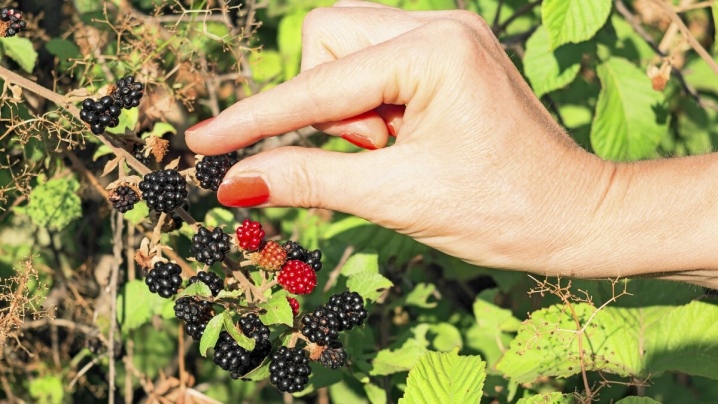
An upright bush grows up to 3 m in height, and a creeping blackberry grows up to 1.5 m in height. The stems of the plant are covered with many large thorns. Blackberries bloom in June with large white-pink flowers. The crop is harvested in the fall, before the first frost. Garden and upright varieties have a sour taste, while forest and creeping blackberries are sweeter.
The mass of nutrients of the berry is not inferior to the previous ones: pectin, fiber, amino acids, antioxidants, minerals and vitamins are contained in it in large quantities. Like raspberries, blackberries have antipyretic and anti-inflammatory properties, have a positive effect on the cardiovascular and nervous systems of the body, and prevent the appearance of neoplasms.
Delicious berries are actively used in cooking, for homemade preparations, they are eaten just like that.
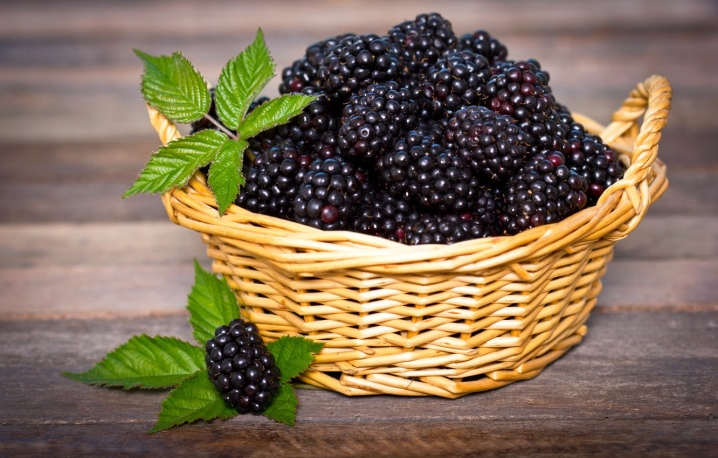
Review of other berries
Mora
Mora and raspberries are the closest relatives. Both crops belong to the Rosaceae family. Mora is a tall perennial shrub, under 3 m high. It grows in the countries of South and Central America. He loves warmth and light, but also tolerates temperatures around zero degrees well.
Mora berries are very similar to raspberries in appearance. The volume of large berries is about 3 cm, and the weight is 3-5 grams. In taste, the fruits are not inferior to their relative, and even surpass her in valuable qualities and nutritional value. Juicy and sweet, with a little astringency, they contain a large amount of vitamin C, phosphorus, iron and calcium, a lot of organic acids and pectin.
Mora helps fight respiratory diseases, is an excellent anti-inflammatory agent, and is used to increase blood pressure. The high iron content makes mora berries an excellent general tonic and a natural source for anemic patients.
As with any berries, jams, jams, jellies and compotes are made from mora. Used to decorate confectionery.

Strawberry spinach
Strawberry spinach, raspberry spinach or Marya multifaceted, gardeners have recently planted on their plots. The culture belongs to the swan family, and has no kinship with raspberries, despite the fact that the berries of the plants are similar to each other. The closest native of strawberry spinach are leafy spinach, beetroot and common quinoa.
In the southern regions, the culture grows wild. Annual plants develop and grow rapidly, reaching a height of 500 to 800 cm. The culture is not afraid of either heat or cold, and even withstands frost.
In the axils of the spreading leaves, bright red soft fruits with black seeds appear. The pulp of the berries is tender and tasty, with a slight hint of strawberries, contains beta-carotene, protein, magnesium, potassium and iron, oxalic acid, phosphorus, vitamins of group B, A.
Interestingly, you can eat not only berries, but the whole plant as a whole. Compotes and preserves, jams and mashed potatoes are made from berries. Dried, frozen and canned for the winter. Leaves and stems are used to make salads.
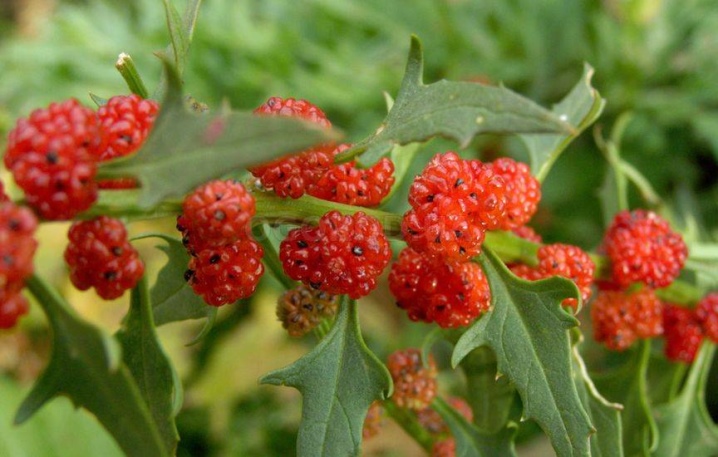
Similar hybrids
Stone berry
This berry is called differently: stone, berendea berry, rock raspberry or northern pomegranate. The plant loves a cool climate. You can meet him in Karelia and the Far East, in the Altai Territory, on Sakhalin. It grows in North America, Tibet, the Himalayas, Iceland and the Mediterranean.
Small bushes 30-40 cm high grow in rocky terrain, clinging to the rock with their creeping shoots. Bone berries are bright red, glossy, no more than 1.5 cm in diameter, as if they glow from the inside.4-5 drupes covered with ruby pulp are gathered in a handful around a large bone.
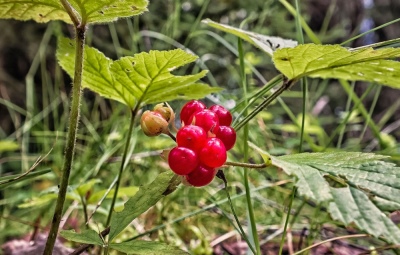
Boneberry blooms in June, and bears fruit in late August - early September. The taste of the bone is pleasant, its flesh is sweet and sour, not cloying, soft and juicy. The fruit contains pectin compounds, carotenoids, phytoncides, natural acids. Bones are rich in vitamin C, iron, manganese, copper.
Berries increase hemoglobin, help fight pathogenic processes, and have anti-inflammatory effects. They normalize blood pressure, have a beneficial effect on the process of hematopoiesis.
Bones are eaten in the same way as raspberries. They bake pies with her, make jam, fruit drinks, compotes.
Fresh fruits go well with dairy products: cream, sour cream, yogurt.

Ezhemalina - Logan Berry
An amazing plant - ezhemalina appeared in 1881 in the garden of the Californian breeder James Logan, who crossed two popular crops: raspberries and blackberries. But the new hybrid was highly appreciated by experienced gardeners, and Russian breeder Vladimir Michurin named Yezhemalina a logan berry in honor of its creator.
The plant has amazing properties. It is not afraid of frost and grows well in northern latitudes, and its yield is amazing. Up to 8 kg of berries can be harvested from one bush. The fruits are larger than raspberries and blackberries, have an elongated shape and a beautiful dark purple color.
The bushes of the logan berry are tall, spreading, with many shoots bent in the form of arches, which are attached to trellises. Ezhemalina ripens gradually. Harvested late: from September to November. Juicy and tart berries with sourness vaguely resemble raspberries in taste, but are more similar to blackberries. They make excellent wine, compotes and fruit drinks.
The fruits are rich in fiber, fatty acids, minerals, choline and trace elements, vitamins of group B, AC, PP. The chemical composition has a positive effect on the functioning of the stomach and cardiovascular system, normalizes metabolism, has a calming effect, and improves immunity. Improves vision, prevents the development of osteoporosis, lowers blood sugar.
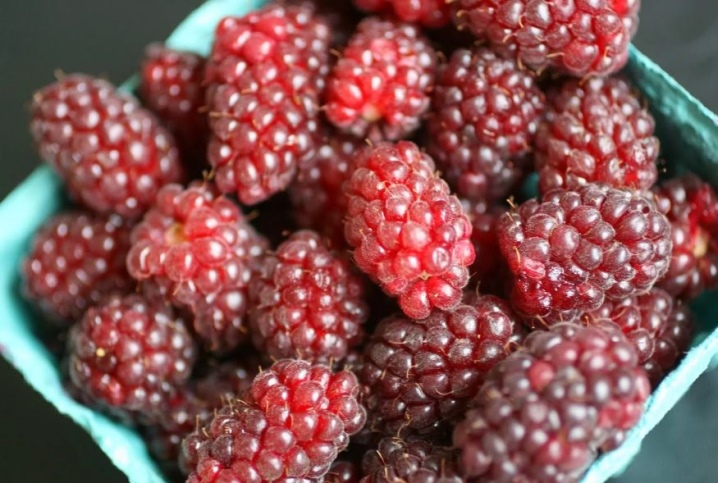
Tataramoa
Small, yellow with an orange tinge, berries ripen on the shoots of a tall 15-meter liana in the forests of New Zealand. Small drupes, covered with pulp, gleam attractively in the rays of the sun, luring the feathered inhabitants of the jungle.
Locals cultivate the liana as a hedge around their homes, and the fruits, which taste fresh, are used only for harvesting.
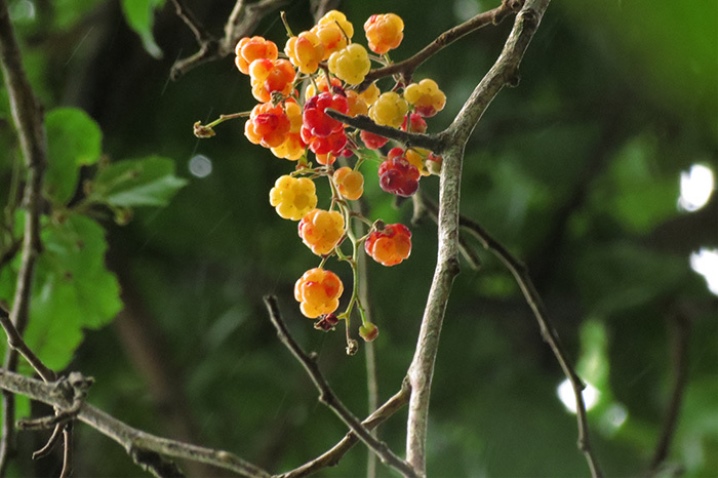
Sylvanberry
This hybrid was created by breeders in Australia by crossing the best varieties of blackberry, raspberry and jemalina. The deep purple, almost black Sylvanberry is very juicy, sweet and large in size. The berry weighs 9-10 g. More than 10 kg of berries can be harvested on one adult shrub. The fruits are delicious not only raw. They make excellent jam, compote, jam, marshmallow.

Princess
The fruits are similar to raspberries and drupes. The relict biennial plant loves swampy and cool places and is rarely found in the forests of the middle zone. It grows in the Urals, in Transbaikalia, and is found in Sakhalin. For this, the prince was nicknamed "Arctic raspberries".
The berries are very sweet, taste like pineapple, lingonberry and raspberry at the same time, and their smell is comparable to the world's best vintage wines. For its unusual taste and colorful appearance, the berry was highly valued in Russia. It was served on tables and was a favorite delicacy of noble people.
The princess grows in small bushes up to 40 cm high. It blooms in May with large pink flowers. The fruits ripen towards the end of summer and acquire a rich pink color with a cherry tint. The berry is rich in vitamins, acids and minerals. It has long been used as an anti-inflammatory and antipyretic agent, used to treat diseases of the gastrointestinal tract, liver and kidneys.
Diligent summer residents grow garden varieties of the princess in central Russia. The Finnish breeders' hybrids called "Nectar raspberries" are especially popular among gardeners.
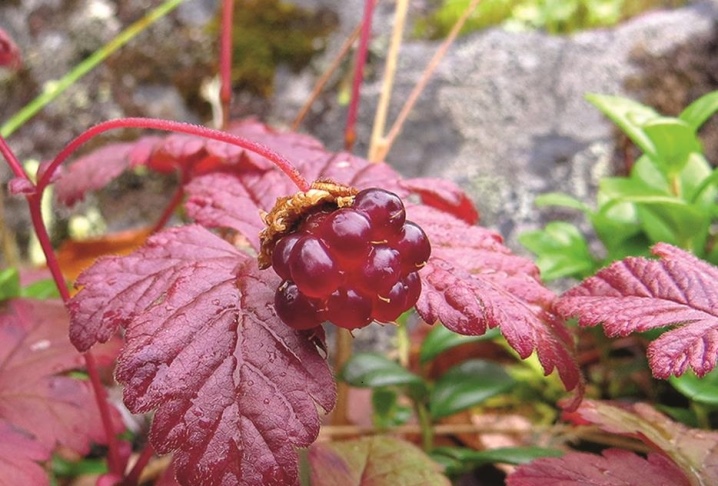












The comment was sent successfully.